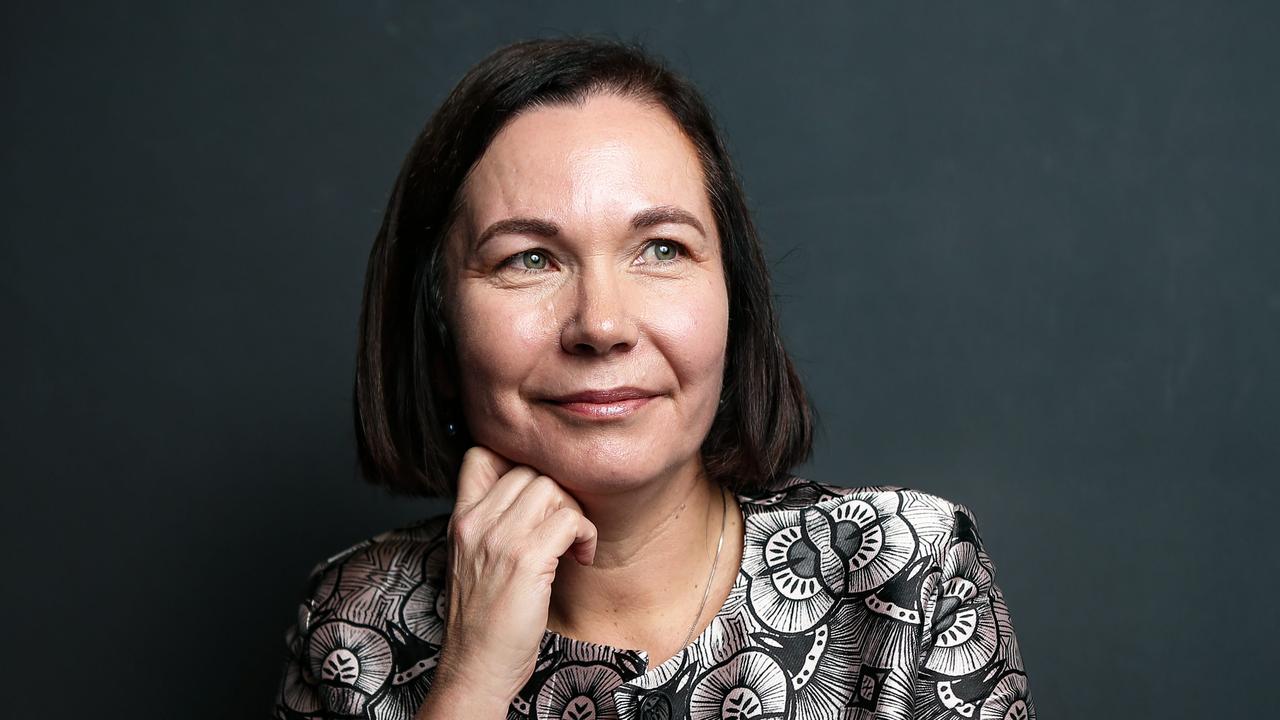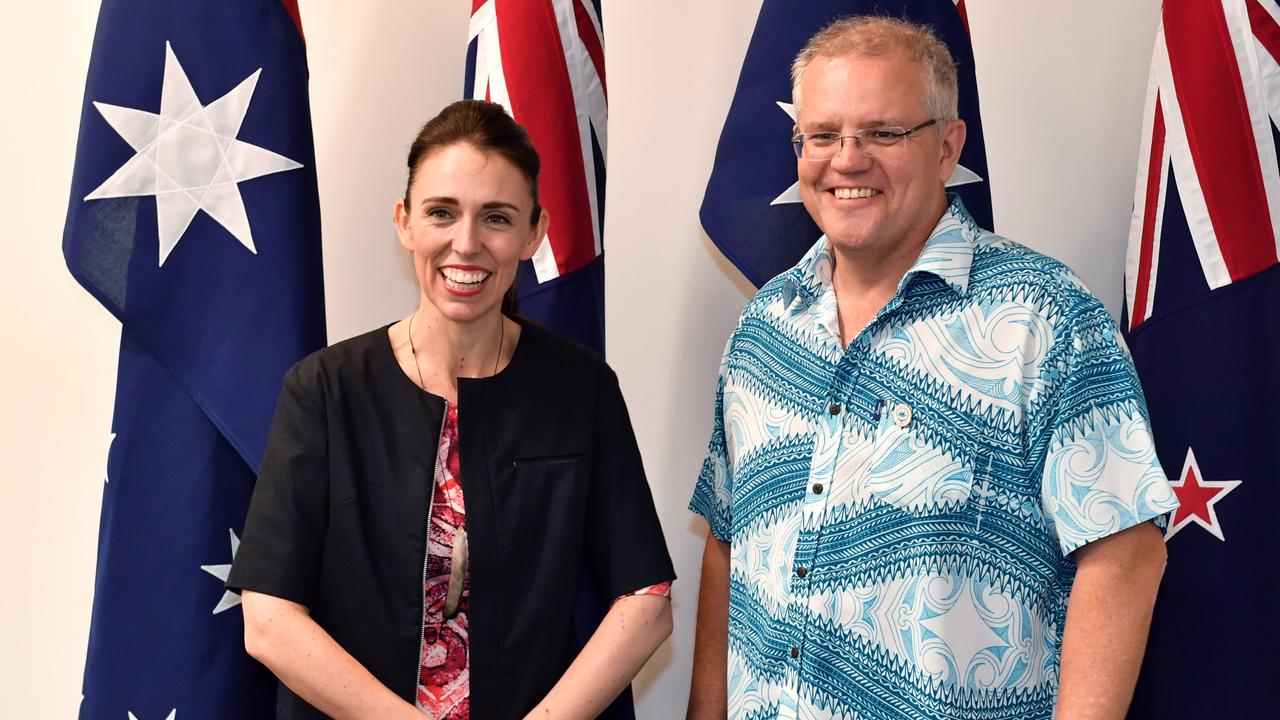Investors put targets on notice
If Australians love someone having a go, they qualify that admiration when it comes to spurning a takeover offer.

If Australians love someone having a go, they qualify that admiration when it comes to spurning a takeover offer.
Both Healthscope’s Paula O’Dwyer and Santos chairman Keith Spence have backed themselves to deliver better value for shareholders than the multi-billion-dollar private equity bids that arrived just a few weeks ago.
But the fall in their share prices in the aftermath of the bid rejections this week highlights that a benchmark has been set against which future performance will be judged.
It is rare rather than unheard of for such rejections, particularly two in a week. But both O’Dwyer and Spence shouldn’t take much comfort from the record of hold-outs.
Treasury Wine Estates is the standout example for the “no” case. After the board twice rejected KKR and Rhone Capital’s bid at $5.10, chief executive Michael Clarke led a turnaround in performance that increased profits more than fivefold and the shares nearly fourfold, until this month’s China-inspired wobbles.
The against case includes Orica, which rejected a $32-a-share cash bid from private equity on the eve of both the global financial crisis and a downturn in the explosives market. Its shares were worth $17.95 yesterday.
A year later Origin Energy rejected British Gas’s $15.50-a-share bid — 10 years on the shares are at $9.80 but on a solid run from their 2016 low of $3.46.
At Santos, Spence confounded the market when he reportedly changed his mind about the bid, which was rejected on the basis that shareholders shouldn’t bear the cost of protecting suitor Harbour’s downside with increased hedging on oil production.
Even with the bid supporting its valuation, Santos’s share price has tracked the oil price on its rise from about $US45 a barrel to almost $US80 in the past year, supported by growing demand and the reversal of OPEC efforts to drive out production from US shale by collapsing the price.
The same dynamic has helped Origin, which is exposed to oil-linked prices for the first full year of production out of its Gladstone LNG export facility.
Any further upside to the oil price would have been captured by Harbour, with Santos shareholders being asked to cash out just ahead of a predicted return to franked dividends.
But by the same token shareholders would have been exposed to any fall in the price as well.
Santos has created some insulation via chief executive Kevin Gallagher’s hard work in driving costs down by almost three quarters for its Gladstone LNG project.
Still, it’s a bold call for a rookie chairman and at a company that has had its fair share of board instability in the past, with former investment banker Ken Borda exiting as chairman in what appears to have been a disagreement over the need to raise equity to pay down debt. The shares fell yesterday, but not as heavily as some might have thought, with investors now having to weigh up their indignation at not getting a chance to vote on a bid against an assessment of the company’s ability to deliver from here.
At Healthscope, chairwoman Paula O’Dwyer doesn’t have the same positive dynamics supporting the business at the moment. The board’s embrace of the private equity playbook — with plans to dispose of the property portfolio that has dragged on returns — shows a willingness to engage on the company’s performance but is not without risks.
Disposing of the properties via a sale and leaseback helps to reduce gearing to about 2.3 times, according to Morgan Stanley’s numbers. But it also raises operating costs and therefore reduces earnings, putting a higher premium on operating performance.
This week’s saw the rejection of a first pass by private equity fund BGH and a revised bid can’t be ruled out. That’s especially so when AustralianSuper, already the largest shareholder, has tipped its hand as a long term believer in the company with a desire to increase its holding.
For the bidders it highlights a problem that the very fact of a bid highlights to investors that there is untapped value in the company and they might be better to hold on and see it realised.
The danger for private equity funds is that they have to bid much higher to get their target and give away so much of the upside they were hoping to capture that it ceases to be a worthwhile deal.
But on the evidence so far this year, until they can find the right balance, their already bulging war chests — growing at 12 per cent a year for the past five years, according to a recent Bain & Co study — will remain unspent.
Lowy bows out
The Westfield takeover by Unibail-Rodamco goes to a vote this morning, likely drawing the curtain on one of the great entrepreneurial careers by an Australian businessman in Frank Lowy.
Judging by the market action in the last few days the betting is it will be waved through, with investors taking their cue from Lowy that it is time to cut and run.
That would be a relief for Lowy as he moves from proprietor of a global empire to investor (albeit with a role on the advisory board). His recent run of corporate shufflings have been somewhat more fractious — including the split that created the Westfield-Scentre Group and paved the way for the European bid.
Three years ago the scheme of arrangement came close to being knocked off, with the shareholder vote deferred at the meeting on the request of shareholder BT Funds Management — and secured weeks after some heavy lobbying by the Lowys and advisers UBS.
Trading volumes in Westfield have been running at nearly double the 11 million daily average since Friday, according to Bloomberg data.
Some local investors are taking their money and running. According to Folkstone Maxim Asset Management’s Winston Sammut the money is already finding its way back into the REIT sector, with Goodman, Dexus, Scentre and GPT all attracting interest.
Here comes the sun
The sun is shining on renewables investment at the moment, but it’s creating a growing headache for regulators in the electricity market. There is an accelerating rush to rooftop solar installations as businesses join households in seeking ways to avoid higher electricity costs.
Latest figures from Green Energy Markets show the number of rooftop solar installations running at 56 per cent ahead of last year’s record pace in the four months to April.
More than 500, new rooftop solar units being installed every day. As Tristan Edis notes, at that pace solar installations would deliver more than 2½ times the capacity of NSW’s biggest generator, Origin Energy’s Eraring plant, in the roughly five years it would take to build and commission a new coal-fired plant.
ITK consulting founder David Lietch estimates that a $14bn investment by households over the past five years roughly matches the investment in commercial scale projects and adds about 6GW of capacity to the system.
But the substitution of supply from the grid to behind the meter, plus the pumping of excess back into the grid to claim feed-in tariffs, is shifting the peak for large-scale generation to later in the day and hurting the prospects for base-load generation from coal, which prefers steadier and more reliable trajectory for supply.
That’s forcing the regulator to intervene in the market more often to order more expensive forms of power to come in and stabilise the system, and countering some of the gains from zero cost generation.



To join the conversation, please log in. Don't have an account? Register
Join the conversation, you are commenting as Logout